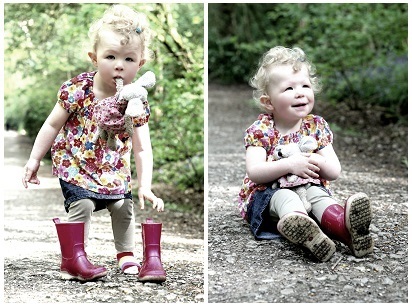Bouncing Back
How to build your child’s resilience
James and Jacob were both 9 and in the same class at school. They both entered the annual Verse Speaking Competition which involved them learning to recite a poem by heart and performing it in front of their class. Finalists were chosen from each class to perform the poem in front of the whole school and parents. Both boys reached the final – but neither won a prize. James shrugged his shoulders and asked his mum what was for tea. Jacob, on the other hand, was tearful and upset; for the rest of the evening he kept asking his mum what he had done wrong. He grew angry with his mum, claiming that it was her fault he hadn’t won, because he alleged that she hadn’t given him enough help.
Two children, the same event – but two very different reactions. Unlike Jacob, James demonstrated the makings of a resilient personality, able to take knock-backs in his stride and bounce back from disappointments. This is a trait that will help mould James into a mentally healthy adult who is able to cope with adversity and with the ups and downs that are an inevitable part of life. Jacob is more likely to become an adult who is floored by stressful events, who finds it difficult to cope with change and uncertainty and who may even get depressed when things go badly. Research suggests that people with high resilience are more likely to display ‘positive adaptation’ (ie to be able to cope and adapt) when faced with difficult situations. Resilient young people in particular are more likely to be hopeful, confident and possess higher self-worth when times get tough.
How then can we raise resilient kids? Research suggests that children who are resilient tend to have a sense of competency and self-confidence in their abilities, they are good at understanding other people’s emotions, have good problem-solving and communication skills, are sociable, independent, tend to reflect on things rather than be impulsive, are able to concentrate on their schoolwork, have a good sense of humour, have hobbies that they enjoy and are able to plan. Here are some ideas of what we as parents can do to foster that all-important resilience:
- Allow kids to build up a skill-base by encouraging them to do things for themselves. Parents who help too much teach a child that they cannot be trusted to master a skill on their own and this erodes their self-belief. Whether it be tying their shoelaces for them, cutting up their food or ‘helping’ too much with homework, we are sending a message that they lack the ability to do it for themselves.

photo by: Sarah-Jane King
- Accept their mistakes: children who are given ‘permission’ to make mistakes will see that as part and parcel of life and not be too fazed by them. Parents who over-react when they get things wrong (‘why are you so clumsy – look what you’ve done’) or who take over in order to prevent mistakes (‘here, let me do that – you will spill it’) are failing to instil resilience.
- Encourage independence: kids who are afraid to spread their wings will lack confidence in their own abilities. When they do eventually gain independence, as soon as things go wrong, they will retreat back into their shell, convinced that this demonstrates how incapable they are. If they are allowed independence (within appropriate limits) they learn to figure problems out for themselves instead of rushing back to mum and dad for help.
- Let them make their own decisions where possible: this allows them to work through issues and learn to trust their own judgements – and live with the consequences too.
- Facilitate hobbies: in an ideal world, a child should be encouraged to find something that they are good at, whether that be violin, scouting, sewing or helping. Knowing that they excel at something, anything, helps build their self-esteem and will help them cope with those times when they might not do so well.
- Be a good role-model: Do you fall to pieces when things go wrong? If your kids see you cry, take to your bed or shout and scream when you get knocked back, they will learn to copy you. Teach by example, by being philosophical and accepting when things go badly.
Much of resilience building is about attitude, so if we can teach our children that, for example, hardships are challenges to be overcome, that perseverance is key, and that things will not always go as planned, then we are half-way there. Too many kids today have unrealistic expectations and little patience often fuelled by the immediacy of the internet (which teaches them to expect gratification at the scroll of a finger), so when things go badly, they are unprepared. We need to teach our kids that life sucks sometimes – but that it doesn’t need to suck us in and spit us out.
As for James and Jacob – there is always next year. Let’s just hope Jacob has built up a bit more resilience by then.






